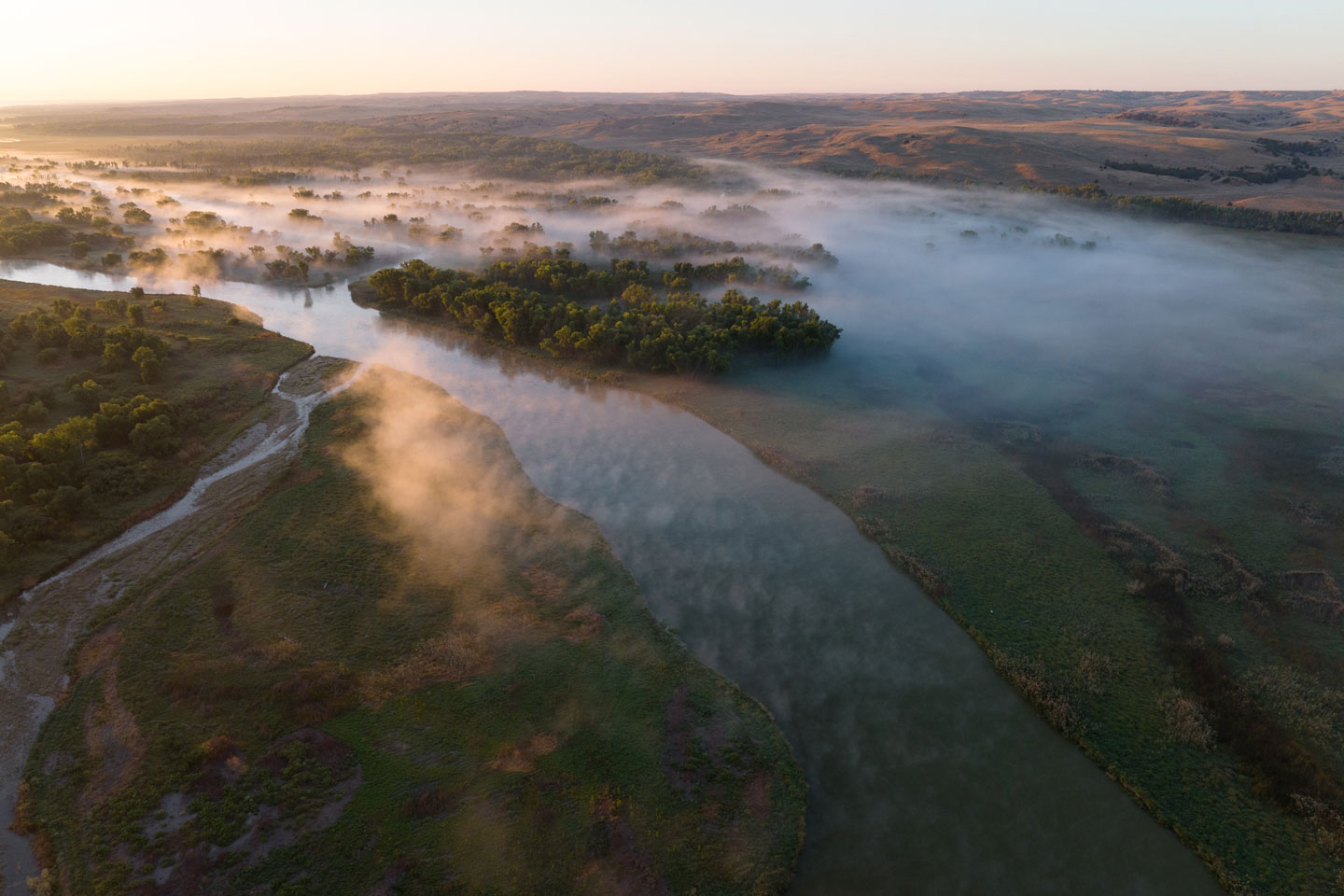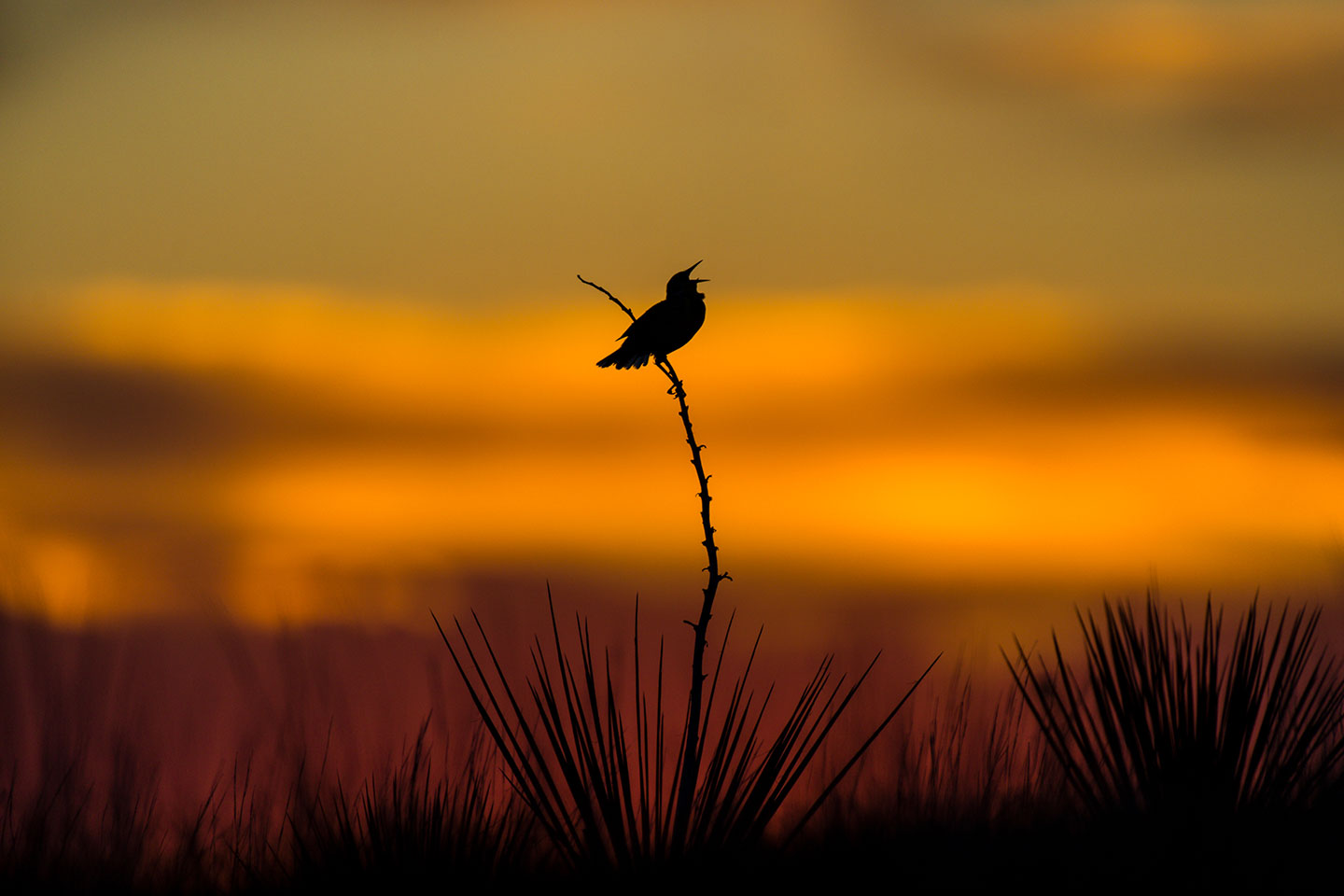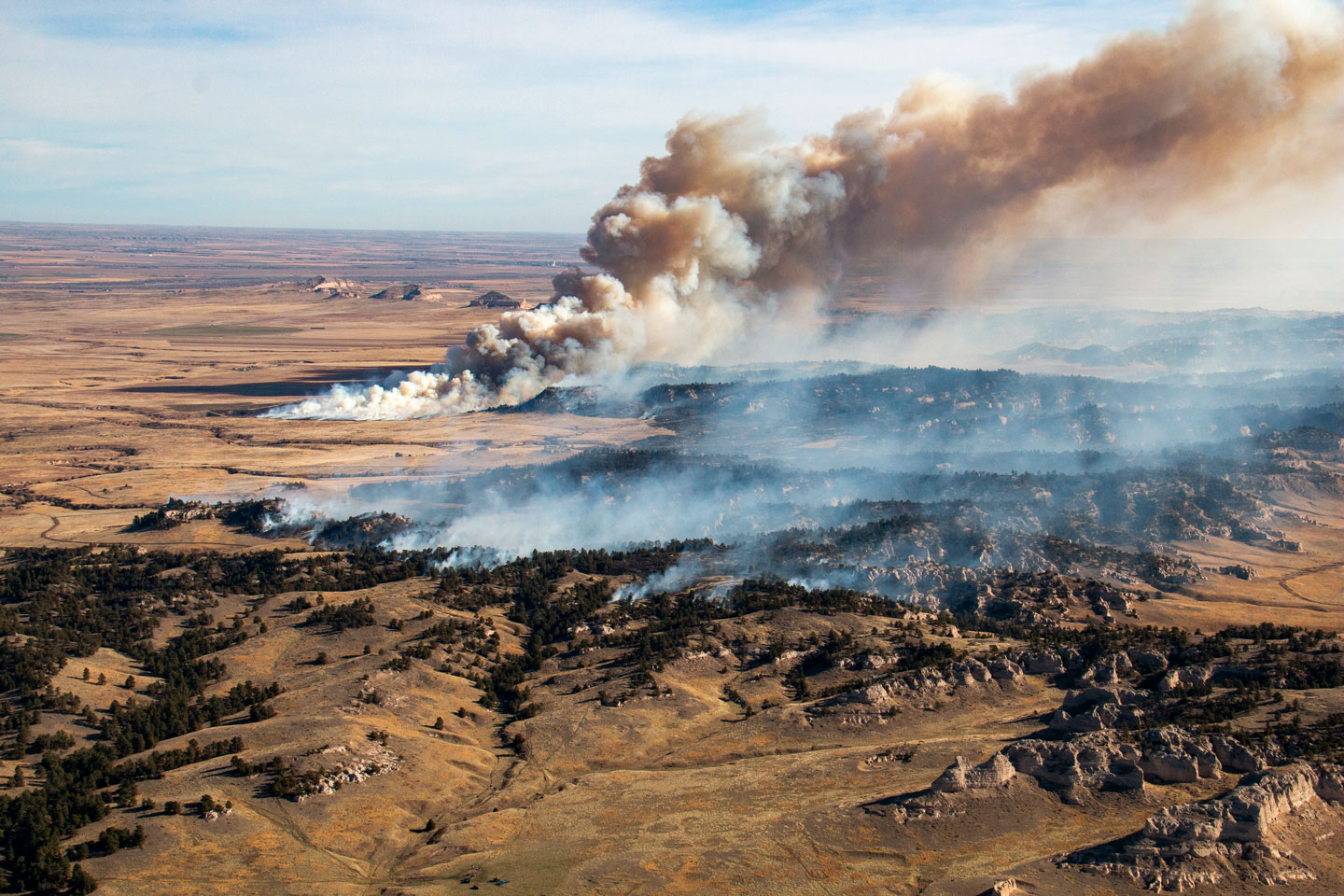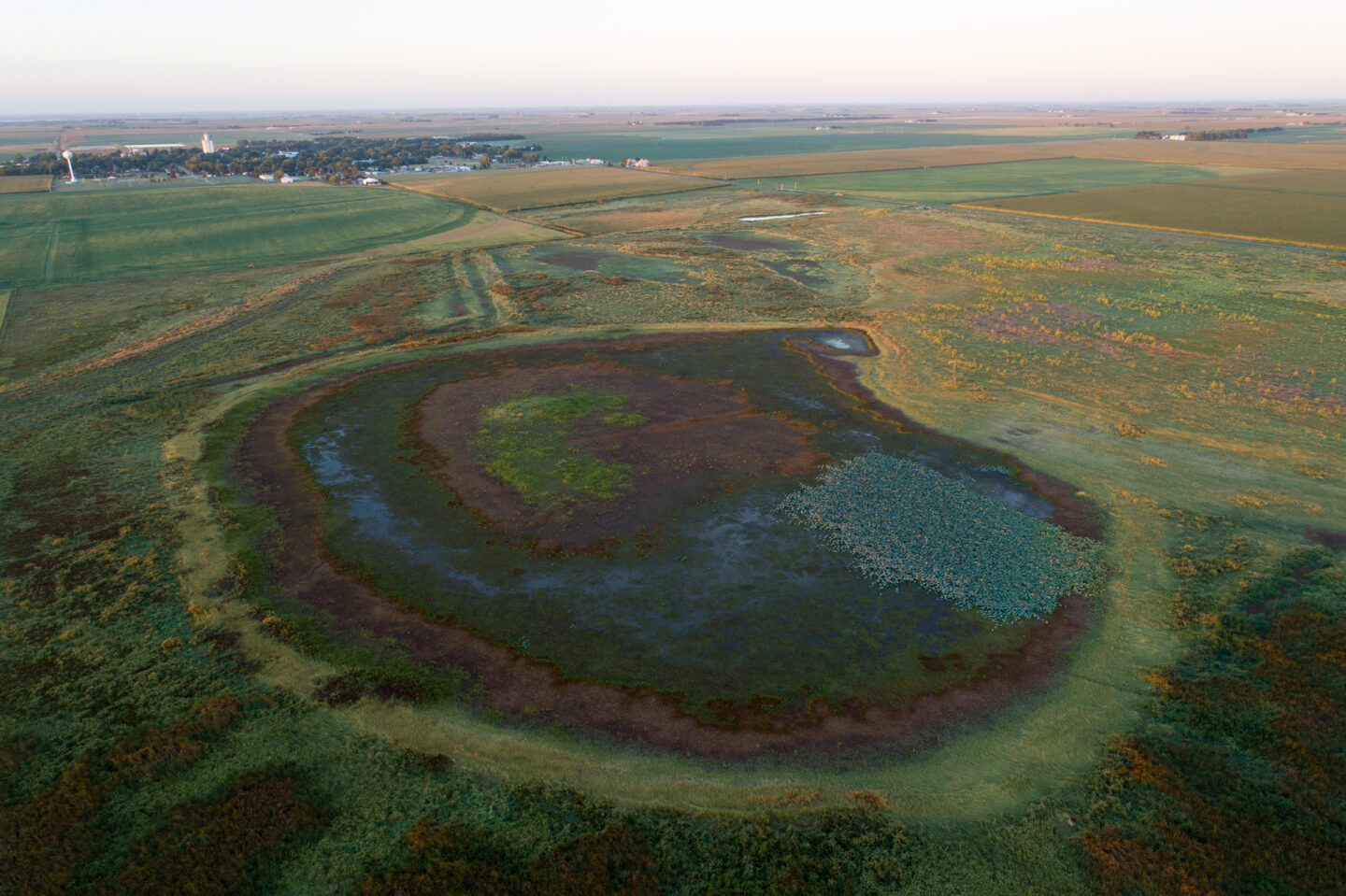Rainwater Basin
The Rainwater Basin provides one of the world’s greatest waterfowl migration spectacles. Possibly tens of millions of waterfowl descend on the Rainwater Basin region of south-central Nebraska each spring, not as a destination, but as a way station between southern wintering retreats and northern nesting grounds. To date, 257 bird species have been observed in the Rainwater Basin.
For one species, the white-fronted goose, the Rainwater Basin has become a critical stopping point for northward migration. Approximately 90 percent of the mid-continent population of white-fronts stage on these wetlands. An estimated 7-9 million ducks and 2-3 million geese annually stop in the Rainwater Basin, including:
- 50 percent of the mid-continental mallard population
- 30 percent of the continental northern pintail population
- 25 species of waterfowl
- 27 species of shorebirds
- 3 endangered and threatened species (whooping crane, piping plover, and least tern)
About the Rainwater Basin
The Rainwater Basin area stretches from Seward County west of Lincoln to Gosper County near Lexington, spanning 21 counties and nearly 6,200 square miles. Rainwater and snowmelt fill the basins every year, just in time for the waterfowl that will depend on it for food, roosting and shelter. A generous supply of seeds and tubers from wetland plants, as well as corn from surrounding farms, provides the required energy for pairing and continued migration. Later in the spring, these shallow basins warm, brewing up a protein-rich soup of invertebrates. Few birds will remain in the basins to raise young, with most traveling north to the Dakotas and Canada to breed.
History
Before European settlement, wetlands were plentiful from the gulf coast to the Arctic. The Rainwater Basin was a large part of a chain of wetlands where waterfowl could briefly visit on their way northward. Today, only 10-20 percent of the original 200,000 acres of wetlands remain. Many of these wetlands were drained or altered for agriculture, making each wetland more vital to the Central Flyway than ever.
Conservation
The Rainwater Basin Joint Venture was started in 1992 under the North American Waterfowl Management Plan to protect remaining wetlands, and to restore drained and altered wetlands to help in meeting the demands of migrating waterfowl and shorebirds. The Joint Venture is a partnership between state and federal agencies, non-governmental organizations, landowners and farmers to address natural resource issues through various projects that improve migratory bird habitat.
Other wildlife such as white-tailed deer, coyotes, muskrats, prairie dogs, and beavers can be seen in and around Rainwater Basin wetlands. There are 84 publicly owned Rainwater Basin wetlands totaling over 28,600 acres.




